Irina-Elena Veliche
Sid
The Llama 3 Herd of Models
Jul 31, 2024Abstract:Modern artificial intelligence (AI) systems are powered by foundation models. This paper presents a new set of foundation models, called Llama 3. It is a herd of language models that natively support multilinguality, coding, reasoning, and tool usage. Our largest model is a dense Transformer with 405B parameters and a context window of up to 128K tokens. This paper presents an extensive empirical evaluation of Llama 3. We find that Llama 3 delivers comparable quality to leading language models such as GPT-4 on a plethora of tasks. We publicly release Llama 3, including pre-trained and post-trained versions of the 405B parameter language model and our Llama Guard 3 model for input and output safety. The paper also presents the results of experiments in which we integrate image, video, and speech capabilities into Llama 3 via a compositional approach. We observe this approach performs competitively with the state-of-the-art on image, video, and speech recognition tasks. The resulting models are not yet being broadly released as they are still under development.
Improving Fairness and Robustness in End-to-End Speech Recognition through unsupervised clustering
Jun 06, 2023



Abstract:The challenge of fairness arises when Automatic Speech Recognition (ASR) systems do not perform equally well for all sub-groups of the population. In the past few years there have been many improvements in overall speech recognition quality, but without any particular focus on advancing Equality and Equity for all user groups for whom systems do not perform well. ASR fairness is therefore also a robustness issue. Meanwhile, data privacy also takes priority in production systems. In this paper, we present a privacy preserving approach to improve fairness and robustness of end-to-end ASR without using metadata, zip codes, or even speaker or utterance embeddings directly in training. We extract utterance level embeddings using a speaker ID model trained on a public dataset, which we then use in an unsupervised fashion to create acoustic clusters. We use cluster IDs instead of speaker utterance embeddings as extra features during model training, which shows improvements for all demographic groups and in particular for different accents.
Text Generation with Speech Synthesis for ASR Data Augmentation
May 22, 2023
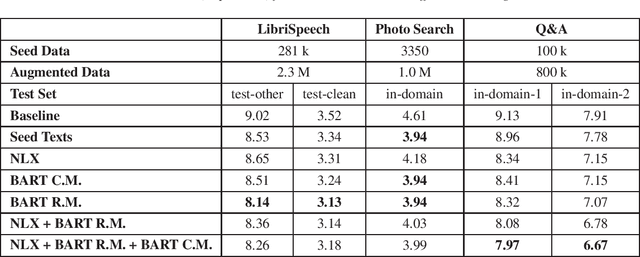

Abstract:Aiming at reducing the reliance on expensive human annotations, data synthesis for Automatic Speech Recognition (ASR) has remained an active area of research. While prior work mainly focuses on synthetic speech generation for ASR data augmentation, its combination with text generation methods is considerably less explored. In this work, we explore text augmentation for ASR using large-scale pre-trained neural networks, and systematically compare those to traditional text augmentation methods. The generated synthetic texts are then converted to synthetic speech using a text-to-speech (TTS) system and added to the ASR training data. In experiments conducted on three datasets, we find that neural models achieve 9%-15% relative WER improvement and outperform traditional methods. We conclude that text augmentation, particularly through modern neural approaches, is a viable tool for improving the accuracy of ASR systems.
Synthetic Cross-accent Data Augmentation for Automatic Speech Recognition
Mar 01, 2023


Abstract:The awareness for biased ASR datasets or models has increased notably in recent years. Even for English, despite a vast amount of available training data, systems perform worse for non-native speakers. In this work, we improve an accent-conversion model (ACM) which transforms native US-English speech into accented pronunciation. We include phonetic knowledge in the ACM training to provide accurate feedback about how well certain pronunciation patterns were recovered in the synthesized waveform. Furthermore, we investigate the feasibility of learned accent representations instead of static embeddings. Generated data was then used to train two state-of-the-art ASR systems. We evaluated our approach on native and non-native English datasets and found that synthetically accented data helped the ASR to better understand speech from seen accents. This observation did not translate to unseen accents, and it was not observed for a model that had been pre-trained exclusively with native speech.
Model-Based Approach for Measuring the Fairness in ASR
Sep 19, 2021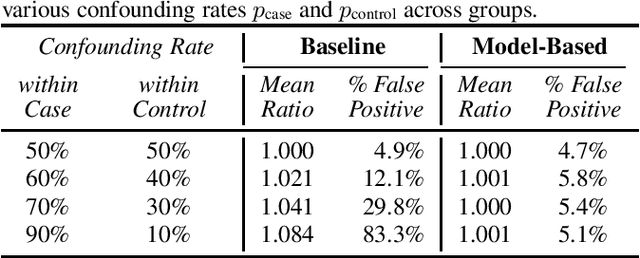
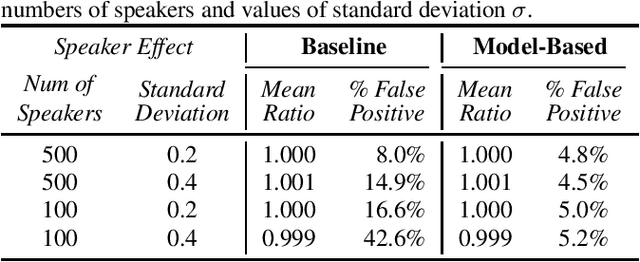
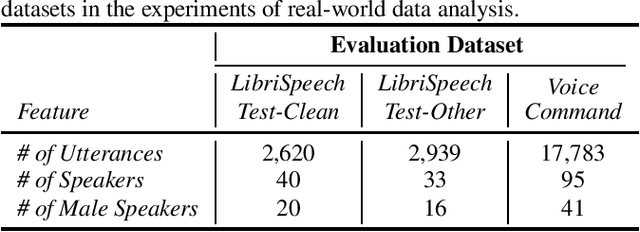
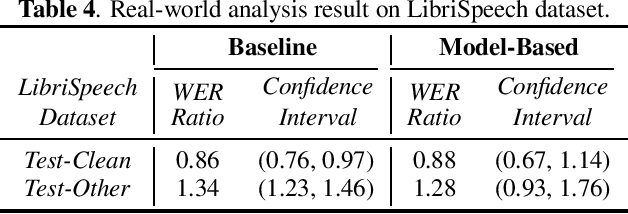
Abstract:The issue of fairness arises when the automatic speech recognition (ASR) systems do not perform equally well for all subgroups of the population. In any fairness measurement studies for ASR, the open questions of how to control the nuisance factors, how to handle unobserved heterogeneity across speakers, and how to trace the source of any word error rate (WER) gap among different subgroups are especially important - if not appropriately accounted for, incorrect conclusions will be drawn. In this paper, we introduce mixed-effects Poisson regression to better measure and interpret any WER difference among subgroups of interest. Particularly, the presented method can effectively address the three problems raised above and is very flexible to use in practical disparity analyses. We demonstrate the validity of proposed model-based approach on both synthetic and real-world speech data.
 Add to Chrome
Add to Chrome Add to Firefox
Add to Firefox Add to Edge
Add to Edge